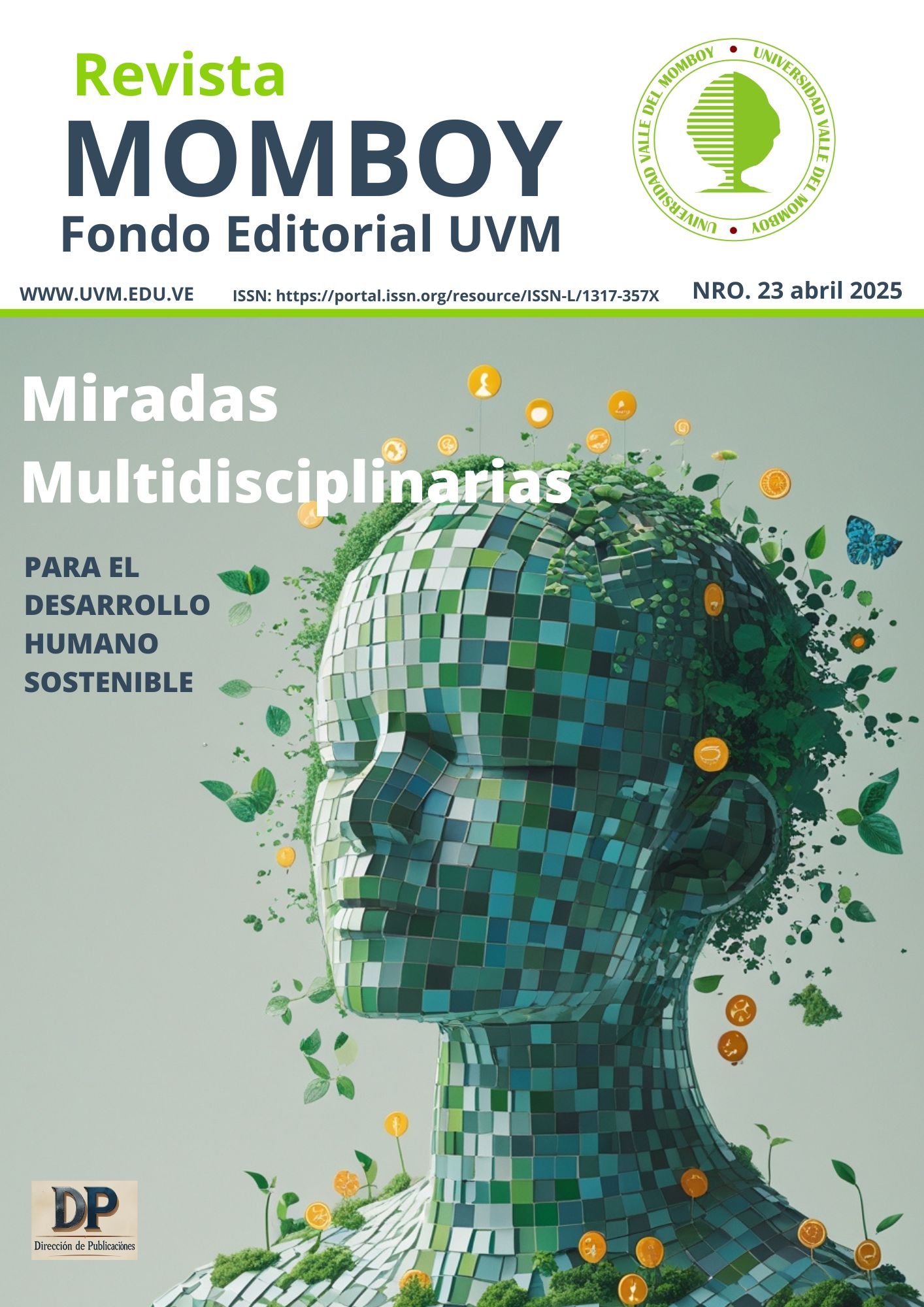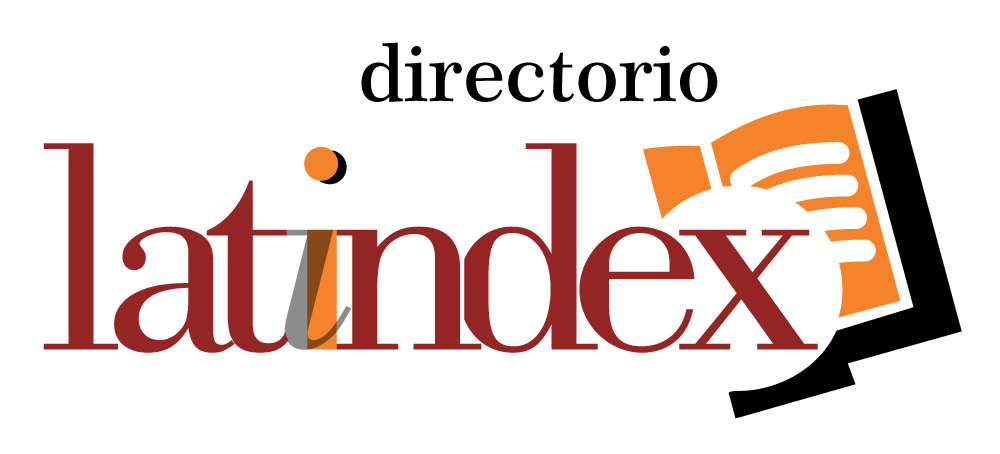El mito en el arte de Oswaldo de León Kantule: aproximación a la cosmogonía guna
DOI:
https://doi.org/10.70219/mby-232025-381Palabras clave:
arte indígena, cosmogonía guna, mitología, cultura guna, Oswaldo de León KantuleResumen
La conexión de la obra del pintor indígena Oswaldo de León Kantule con su cultura aproxima a conocimientos fundamentales de la cosmogonía de este pueblo. Tradicionalmente, la temática de las manifestaciones artísticas se ha nutrido de la mitología y la religión, y en este caso, las alusiones mitológicas, religiosas y a la tradición oral guna que hace Kantule en sus obras acercan a la cultura de su pueblo. La investigación tiene el objetivo de identificar el mito en el arte de Oswaldo de León Kantule, como una aproximación a la cosmogonía guna, teniendo en cuenta que el arte es el mejor vehículo para explorar una cultura a través de sus señales, símbolos e imágenes, con la obra de Kantule se adentra en los orígenes de su cultura, su cosmovisión y sus aspectos rituales. Pero su visión como artista contemporáneo refleja también su preocupación por las transformaciones sociales, ecológicas y tecnológicas del mundo moderno, vinculando la cosmogonía ancestral a la realidad del siglo XXI. Entender las sociedades indígenas desde la pintura es una experiencia didáctica que permite comprender una de las culturas más relevantes de Panamá. Basándose en un paradigma cualitativo, con los mitos y los ritos gunas en la obra de Kantule se empleó un método deductivo inductivo para decodificar, analizar y clasificar las dos obras del artista con la técnica documental. El paradigma cualitativo permitió interpretar las obras desde una perspectiva fenomenológica y a través de la hermenéutica, vinculando el arte con lo etnográfico y lo educativo. El resultado demuestra que mediante las imágenes es posible la comprensión de una cultura compleja y desentrañar sus aspectos mitológicos básicos, estableciendo una relación entre arte y experiencia didáctica.
Descargas
Citas
Bamford, A. (2009). El factor ¡wuau! El papel de las artes en la educación. Editorial Octaedro.
Cabrera Martínez, L. (2011). El laberinto del minotauro. Temas de Estética y Arte, XXV, 228-264. https://goo.su/8COLKe
Castillo Bernal, D. (2005). Fortalecimiento de los conocimientos medicinales del pueblo kuna en Panamá. Proyecto 'Recuperación de los Cantos Medicinales Orales Kunas (Igargan). Primer Foro Salud Indígena, San José de Costa Rica octubre de 2005.
Cook, T.D. & Reichardt, Ch. S. (1986). Método cuantitativo y cualitativo en investigación evaluativa. Edición Morata S.L.
Cotán Fernández, A. (2016). El sentido de la investigación cualitativa. Escuela Abierta.
Creswell, J. W., & Creswell, J. D. (2017). Research design: Qualitative, quantitative, and mixed methods approaches. Sage Publications.
De León Kantule, O. (2004). La simbología en el arte kuna. [Tesis de Licenciatura no publicada]. Universidad de Panamá.
De León Kantule, O. (2018). Espiritualidad – Spirituality. En Oswaldo de León Kantule. Arte desde el corazón de Abya Yala. https://deleonkantule.wixsite.com/achu
Eliade, M. (1999). Lo sagrado y lo profano. Libros Tauro.
Filoramo, G., Massenzio, M., Raveri, M., & Scarpi, P. (2002). Historia de las religiones. Crítica.
Fortis, P. (2013) Kuna Art ans Shamanism. An Ethographic Approach. University of Texas.
Garcés V., F. (2017). Escrituras andinas de ayer y de hoy. Universidad Mayor de San Simón. Instituto de Investigaciones Antropológicas y Museo Arqueológico.
Gassó, L. (1911). La misión de San José de Narganá entre los Karibes. Las Misiones Católicas. https://goo.su/UBAa
Graves, R. (1985) Los mitos griegos I. Alianza Editorial.
Howe, J. (2009) Chiefs Scribes and Ethnographers. Kuna Culture from Inside and Out. University of Texas.
Loayza Maturrano, E. (2020) La investigación cualitativa en Ciencias Humanas y Educación. Criterios para elaborar artículos científicos. Educare et Comunicare. Revista Científica de la Facultad de Humanidades. 8(2), 56-66. https://doi.org/10.35383/educare.v8i2.536
Marí Florit, L. (2015) La pintura mitológica de Velázquez: fuentes, posibilidades e interpretaciones historiográficas. Universitat de les Illes Balears.
Mariño, G. (1988). Escritos sobre escritura. Editorial Dimensión Educativa.
Mircea, E. (1998). Lo sagrado y lo profano. Paidós Orientalia.
Nordenskiöld, E. (1938). An historical and ethonological Survey of the Cuna Indinas. Etnografiska Museet.
Nosei, C. (2012). La trama de Aracné. Praxis Educativa, 10(10), 13-19. https://cerac.unlpam.edu.ar/index.php/praxis/article/view/476/410
Read, H. (1950a). La imagen del arte: Una visión de su función cultural. Fondo de Cultura Económica.
Read, H. (1950b) Art and Society. Pantheon Books.












